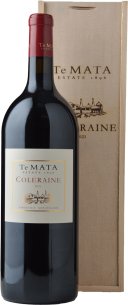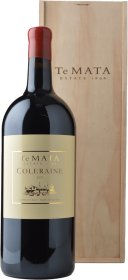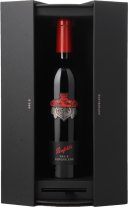Château Palmer Margaux
Château Palmer is considered one of the worlds first 'Super Seconds' (although actually classified as a third growth), a term relating to the top echelon of producers that fall outside of the ancient 1st Growth classification. Margaux's Château Palmer was named after a British general who fought under Wellington. It has been stated by quite a few wine critics that this could possibly be the finest Château Palmer ever produced. An amazing claim considering how phenomenal the 2005 was and is yet to be. Masses of concentrated aromas and flavours that will keep your senses entertained for hours on end. A truly remarkable achievement that will repay the patient cellarer over the next 30 years.
CHATEAU HAUT BRION 1er cru classe
Chateau Haut Brion is one of the five first Growths of the 1855 Classification of the Medoc. The Chateau was established in 1533 by Jean de Pontac, who was the first to plant vineyards on this prime gravelly site, found in the Graves sub-region of Pessac Leognan. The Chateau is owned today by Prince Robert of Luxembourg, the great grandson of Clarence Dillon. It is planted to Cabernet Sauvignon, Merlot, Cabernet Franc and Petit Verdot, with three hectares planted to the white varieties of Semillon and Sauvignon Blanc. Chateau Haut Brion is the only property outside of the Medoc in the 1855 classification. A wine of class and breed, Chateau Haut Brion is typically more approachable in its youth, showing floral perfume and elegance, yet possesses the structure required for exceptional longevity.
Te Mata Estate Coleraine Cabernet Sauvignon Merlot Cabernet Franc
TE MATA ESTATE Coleraine. Cepage may include Cabernet Sauvignon, Merlot, and Cabernet Franc. Hawkes Bay, New Zealand
Chateau Pavie
Another terrific success for the flagship estate (a 92-acre vineyard situated on the famed limestone and clay-rich slopes of Cote Pavie) of Chantal and Gerard Perse, the 2011 Pavie is composed of 70% Merlot, 20% Cabernet Franc and 10% Cabernet Sauvignon. 2011 may be the biggest, richest, most massive wine of the vintage. With thrilling levels of concentration, tremendous purity, high but sweet tannin, a skyscraper-like mouthfeel, and terrific intensity, depth and palate presence, this larger-than-life effort will require 5-8 years of cellaring, and should age effortlessly over the following 25-30 years.
Château Léoville Las Cases
Chateau Pichon Lalande
The history of Chateau Pichon-Longueville Baron is a tale of two estates. The chateau and vineyard known as Pichon Baron was given in dowry to the founders daughter when she married Jacques du Pichon Longueville. After the death of their descendent, the Baron Joseph de Pichon Longueville, in 1850 the estate was again divided - on his deathbed, he gave what became Chateau Pichon Baron to the men of his family, and what became Chateau Pichon Lalande to the women - resulting in, some say, more masculine and sensuous styles of wine respectively! Between the 1960s and the 1980s, the estate went through a period of rather lacklustre production - however, since 1990, they have been producing, according to many, some of the best wines in their history. The 2016 has earned high praise and glowing comparisons to their legendary 1990 Pichon Baron.
Penfolds Superblend 802.B Cabernet Shiraz
PENFOLDS Superblend 802.B Cabernet Shiraz, South Australia 2018 Australias most lauded winery has amalgamated their classic varietals for the coveted 2018 blend, sourcing fruit from Barossa Valley, McLaren Vale, Coonawarra, Wrattonbully, Robe and Clare Valley. An impressive example of Cabernet Shiraz, the 802.B reflects the revered red labels curiosity, innovation and vision for producing elevated Australian wines. Time and time again. A blend of 55% Cabernet Sauvignon and 45% Shiraz blended after fermentation, then matured for 19 months in French oak hogsheads. The 2018 displays complex aromas of dark spiced fruit, graphite, soy, and chocolate with a hint of cedary oak. The palate is layered and sleek with pure and intense fruit flavours, and tannins that are mineral and fine. Medium to full-bodied, silky and delicate, with a long, lingering finish, the 802.B is a true collector's dream.
Chateau Figeac 1er grand cru classe (B)
While a fair share of Bordeaux vineyards can claim significant historical pedigree, few would be able to touch Chateau Figeac - it is one of a select few St Emilion vineyards to have been continuously occupied for over 2,000 years! The estate dates back to the second century when even the ancient Romans who occupied the area were aware of its outstanding terroir. One figure dominates the Chateau’s modern era, and that is Thierry Manoncourt who ran the property from 1947 until his death in 2010, just shy of his 93rd birthday. Under his leadership, the Chateau was the first major Right Bank estate to embrace modern techniques such as temperature controlled, stainless steel vats. The traditional-styled Bordeaux has, understandably, gone through a wide range of iterations in its 2,000-plus year history - yet it still manages to surprise and delight. The 2016 earned rave reviews from critics, with Jancis Robinson hailing it as a wine of which “...the Manoncourt family should be very proud.”
Château Ducru-Beaucaillou St-Julien
Reputed to be the leading star of the ''Super Seconds'' of Bordeuax, Chateau Ducru-Beaucaillou is set over 50 hectares of vineyards in the south of St-Julien. The wine is composed from predominately Cabernet Sauvignon and Merlot, with lesser influence from Cabernet Franc and Petit Verdot and spends around 18 months in half new and half seasoned oak barriques. The 2010 vintage has conspired to produce what could arguably called one of the greatest releases of this wine, resplendent with fine, firm tannin, subtle oak, quiet power and a capacity to cellar for another half century.
Cullen Wines Vanya Cabernet Sauvignon
Named in honour of Vanya Cullens passionate and inspired efforts as a dedicated winemaker and celebrating her love of Cabernet, the Vanya is the ultimate expression of Cullens style - this is Cabernet manifest.




















